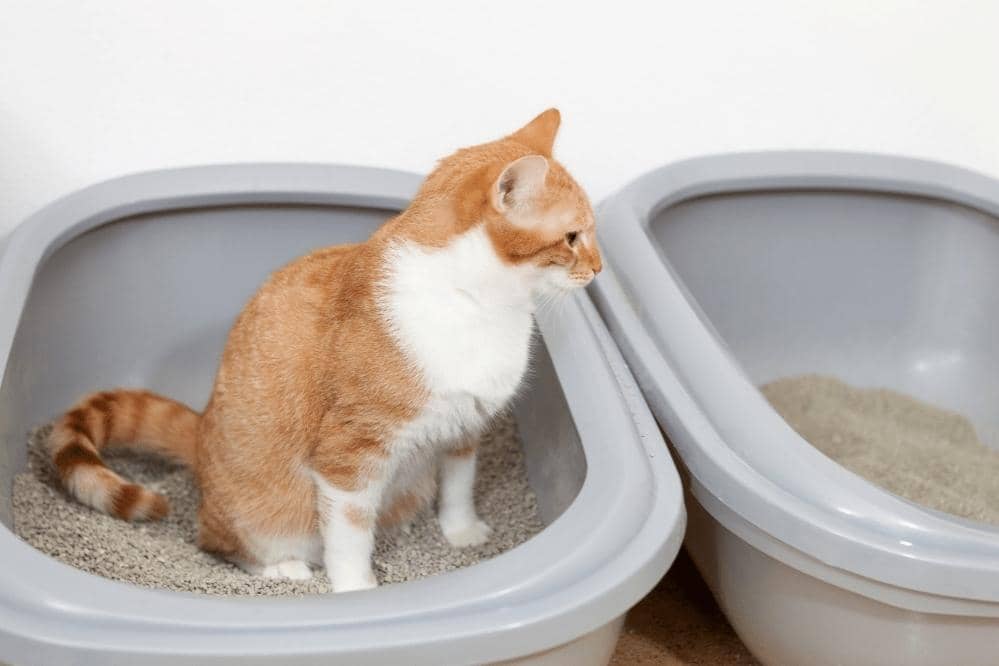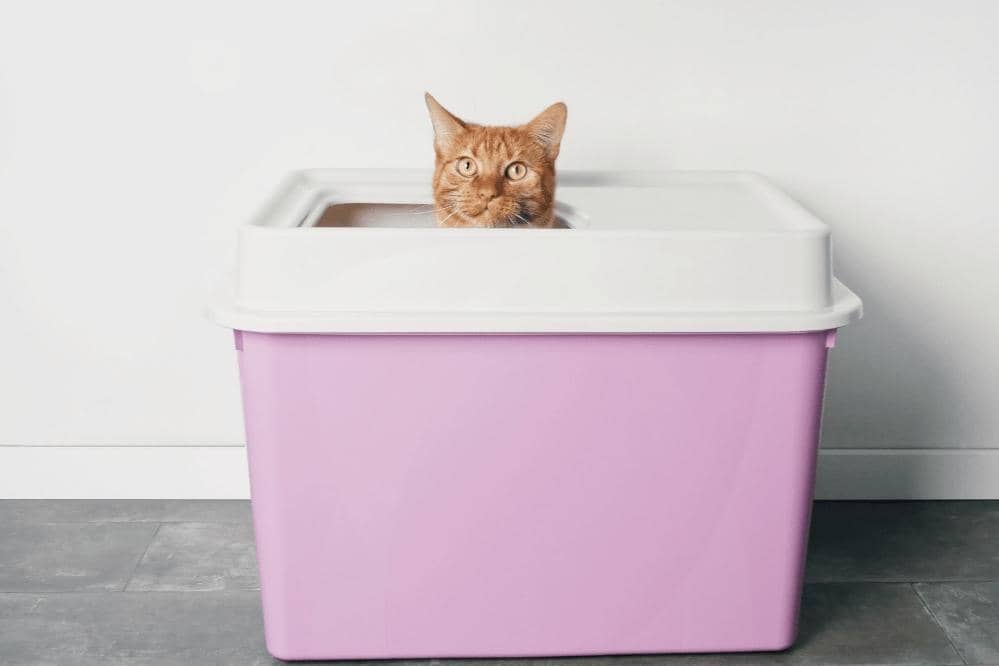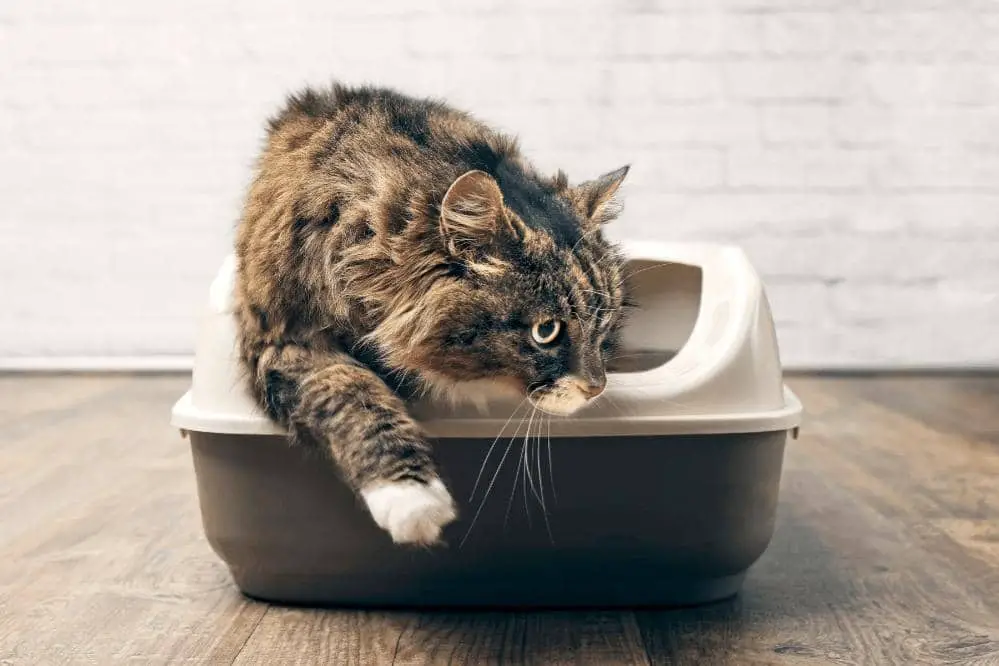How Many Litter Boxes Should a Cat Have?

There are countless things that you need to consider if you are planning to adopt multiple pets into your home. This applies especially to animals who spend the majority of their time inside, such as your standard indoor cats. If you are planning to own more than one indoor cat, you will need to make some accommodations to your life. Of course, you will always need to make sure that you have enough food, water, treats, and toys for all of the cats to be sufficiently entertained. You will also need to make sure that all of the cats can have their own “territory” to own, as this will help to prevent territorial disputes over food, water, toys, and the litter box. Speaking of the litter box, you may begin to wonder how many litter boxes you should invest in so that you can keep all of your cats happy and have minimal accidents in the house.
The rule of thumb for this problem is that you should have one litter box per cat, plus an extra litter box on the side. If you only have one cat, then you only need one litter box to accommodate that cat. You should be cleaning all of the litter boxes daily and replacing the litter in the litter boxes on a weekly basis. If this sounds like a lot of work, then you would be correct. Taking care of an animal that lives its life primarily indoors means that you need to provide appropriate places for your cat to relieve itself. For animals that tend to have territorial issues, the amount of work that you will need to put in will increase, and cats are no exception to this rule.
With that being said, not every home is an ideal place for countless litter boxes. The home may be cramped or may not have a lot of suitable places for litter boxes to exist. It could be that you live in a small apartment building and you want to have two cats, but you don’t necessarily want to have three litter boxes to clean up after. While you will want to adhere to the rule of thumb as much as you should, there are some compromises that you can make if you realize that your house is not a suitable place for countless litter boxes. Before you can work with the compromises, you will first want to understand what goes into the placement of a litter box and where you can find a good place for yours to go.
Finding the Right Spot for Your Litter Box
First things first, you will need to work out how much space you will need for your litter boxes. Cats tend to be finicky about where they want to leave their droppings, so there are more than a few guidelines to follow when trying to figure out where you should put your cat’s litter box. For one, you cannot put the litter box near the cat’s food, water, toys, or bed. Cats do not like to relieve themselves in areas that are close to their food and water, or where they choose to sleep and play. Cats are creatures of privacy, so the litter box should be an area of the house that doesn’t get a lot of foot traffic and is a relatively quiet part of the house. Cats will also not feel comfortable using a litter box that is completely hidden from view, so you will need to make sure that the litter box can be easily accessible and can be easily seen from your cat’s perspective.
As for the guidelines for your convenience, you will need to make sure that the litter box is in a well-ventilated area of the house that does not get extremely humid. This will help cut down on the smell that comes out of the litter box. If you want to eventually hide the litter box, you will first want to leave the box out in front of the area you will hide the box in so that the cats are used to the general location. From there, you can slowly move it into the desired hidden position, so that your cats won’t feel as if their litter box has gone missing, but you also won’t need to stress about seeing the unsightly remains of your cat’s food.
Making Compromises Wherever You Can
In some cases, you may realize that while you have multiple cats, you do not have enough suitable places to keep your litter boxes. There are a couple different routes you could go down here. You may want to try storing the separate litter boxes away and out of sight and hope that your cat can find them, but there is no guarantee that this can work. One thing that you may want to try is either going particularly large or going very small. A very large litter box may work well at being a two-cat litter box as long as your cats don’t appear to exhibit any territorial tendencies. If you have territorial cats, and one of the cats seems to have a dominant personality, then this may not work out well as the dominant cat could try to claim the larger litter box for itself and not allow other cats to use it.
A better variant of this is to purchase a very small litter box that you could store more easily than a standard sized litter box. In these cases, these litter boxes will be more susceptible to having litter be tossed out of the box or feces being found outside of the box. If a litter box is too small for your cat’s liking, it will simply not use the box, rendering the purchase of the smaller litter box to be useless. However, if you need an emergency location for a litter box so that more submissive cats will not be too daunted by a dominant cat’s claim of a litter box, these boxes can work well and they can ensure that every cat will have a place to relieve themselves if the need occurs.



